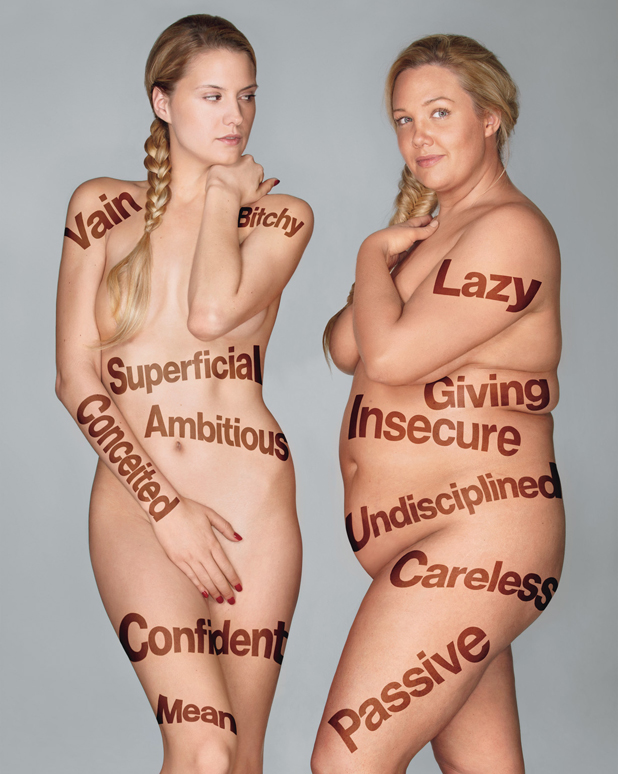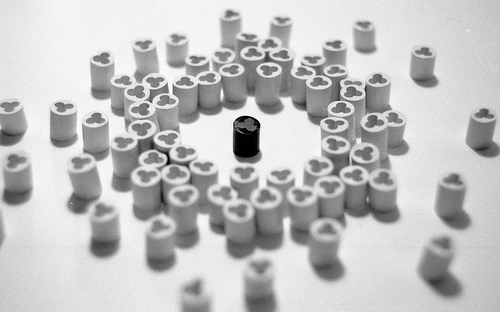
Awakening Our Gifts Part 2: The Makings of Mind
There is splendour behind the illusion.
It is all around us and everywhere we look.
It is unfortunate that it gets lost in the looking.
We are a powerful consciousness, one that slips into shadow in the glare of everyday life. It is our empathy, telepathy, ability to be sensitive and work with energy and access to our intuition, our non-rational capabilities (those not rooted in thoughts), that are typically lost in the shadows. Our consciousness is not hiding; we put it there and have caged it because of our tendency to think too much and poorly. Un-caging it is just the nature of our adventure, hence poorly is not meant as a negative, it is merely a reality, it is part of the nature of the very consciousness we would like to unfold.
You could structure the journey of unfolding into three stages. Looking at it in reverse, unfolding our sensitivity requires that we work at becoming more sensitive to the subtle aspects of we perceive, that being intuitive thoughts and more fundamentally energy. Now, we can only do this if we can perceive these vibrations. In order to do this we must remove the obstructions we have created (our poor mental programming) that prevent us from conscious perception of these subtle aspects. That is to say, we start by working to reduce the clutter in our minds, clean the windows so to speak.

In part one of this series I listed a number of areas that we should focus on if we want to start to consciously use more of our natural awareness. For this part of the series we are focused on the first three in the list, namely:
- Weak or underdeveloped reasoning processes
- Rational mind programming that blocks perceptions
- Difficulty in focusing attention
These three areas play an enormous role in the development of our mental house. First, our non-conscious mind (commonly referred to as the sub-conscious) takes its lead from the direction of our conscious mind. It integrates thoughts in a manner consistent with our thinking. If we don’t apply proper reasoning processes to what we perceive, we interpret information “incorrectly”. This leads to the second point, in that our mind reflects this in the poor programming that leads not only to challenges in our life, it also blocks our perception.
Lastly, the challenge of focus is related to our ability to restrict attention. Our minds are powerful, but they do process thousands upon thousands of “pieces of information” every second. It is hard to sense the subtle when there is this much static in the mind. Reducing this endless chatter is critical as, along with poor programming, it pushes our gifts into the shadows. I spoke about this in the “Awareness Series Part 2: Developing our Ability to Focus” (1).
Our minds, guided primarily by our conscious thoughts, can make associations incredibly fast, essentially immediately. That said, there is a delay between when we perceive something and when we are conscious of it, if indeed we are (2). There may not seem like a delay but there is one and it is due to the time it takes for the non-conscious mind to pre-process what we get, like a room full of editors chatting about what we get to be consciously aware of.
The thoughts that do the pre-processing develop before we are able to actively guide their creation; by this I mean we were not taught or shown the importance of good observation and reasoning skills. But then again, how could we be? The world as a whole does not understand more than the basic capabilities of our consciousness hence, they have no way of knowing how or what to teach assuming they even believed that we truly have a broad and powerful awareness.
By the time we have the maturity of intellect we have also developed many misconceptions through poor observation and reasoning skills. This clutters our mind with false and conflicting notions that limit our conscious awareness to the lower astral (emotions) and the material world around us. If we understand how this happens, we can reduce our tendency to do it, and begin to deal with the clutter.
Now, we “think” logically, even though it often appears we do not. This is because the world really isn’t black and white, it is shades of grey. Hence, our minds deal with likelihoods rather than yes and no. It is not absolutes that are important; it is consistency in our thoughts and their validity. Much of this is due to the fact we build our mind before we have any comprehension of such notions.
We are sensitive to all vibrations, though unless one has a natural gift, the degree to which we are conscious of them is related to the work we have done to develop this faculty. Developing our sensitivity is neigh impossible if we continue to let our mind get in the way. In one of the core essays on the Twin Powers material, I explained how we come to allow our own minds to block us:
“When we are young, we have had fewer experiences hence the rational mind develops with assumed truths many of which are misconceptions. Misconceptions do not necessarily stay with us as new information affects existing thoughts and will change or eliminate some misconceptions that are no longer valid. Our physical functions typically use only verifiable truths; after all, we cannot function if we cannot get our bodies to do what we need them to. We do not have misconceptions about how far the ground is when we step forward. Further, the misconceptions come in where the thoughts are about other thoughts rather than being on "things". We create them when we assign causality where none exists, when we rely on erroneous or incomplete reasoning or superficial observation. Stereotyping is a prime example of our misconceptions in action.
Our rational mind categorizes all aspects of each experience by associating them with other experiences we have had or thoughts we have created. Unrelated information is not connected; however, loosely connected information can be. Where this happens, our rational mind uses its imagination to create virtual thoughts or constructs to interpret the experience. This connects existing thoughts in new ways. We create a vast library of virtual constructs and they blend in just like any other aspect of our rational mind. We are complex creatures and our rational mind contains a virtually uncountable number of these highly connected constructs. The misconceptions among them lead to the issues we face. A large number of our issues arise from basing new virtual thoughts on misconceptions. We want to notice or recognize these misconceptions; fortunately, we can learn how to do this.”
From “Introduction to the Rational Mind (RM)” (3)
In a sense, we unlearn the knowing we are born with by masking it with false notions. What this tells us is that developing our awareness skills requires us to unmask ourselves. The mask is the many layers of mistaken notions that we manifest ourselves through superficial observation combined with erroneous thinking.
Our apparent ability to believe things that don’t make sense may lead one to think that our minds do not act in a “logical” manner. But this idea rests on the notion that logic is a quality of mind. This is not the case. The mind is certainly capable of logical thought, but this skill must be learned. The mind does not apply logic when it integrates experiences unless we have trained it to do so. It only integrates our experiences based on such things as commonality with existing thoughts and do so in the manner we have taught or trained it to. The integration process is the same way every time, but without training the mind will not validate whether the thoughts we have about something are true, consistent or ordered in any way. We can believe something to be true and act upon that belief even if we are mistaken, if we have made that belief more important to us than the truth about it. This is the basis of following statement by Bertrand Russell:
"If a man is offered a fact which goes against his instincts, he will scrutinize it closely, and unless the evidence is overwhelming he will refuse to believe it. If, on the other hand, he is offered something which affords a reason for acting in accordance with his instincts, he will accept it even on the slightest evidence. The origin of myths is explained this way."
The language is a bit old fashioned, in that what he refers to as instincts is synonymous with the non-conscious programming in our mind. Also I would substitute mistaken beliefs for or perhaps add it to "myths". For example, when we falsely interpret an experience, it is because we have not trained our mind to do otherwise. Based on what we have trained it to be concerned about the "false interpretation" is not questioning, to us it has become completely valid. The reason is that, to the mind, validity is a not “a thing”, it is more an attribute of it. Stereotyping people is a good example of this in action. We make assumptions and the mind acts on them. The truth or validity of the assumption has no bearing on how the mind acts. I covered this in the essay “Limiting Aspect of the Rational Mind (RM)” (4)
“A good example of how our mind handles new experiences is in how people tend to rely on first impressions of people, often mistakenly believing that first impressions are accurate, and then holding onto these first impressions as if this were so. When we first meet someone, the mind seeks to categorize them. In order to interpret the new person it searches for commonalities with previous experiences and links these to the new person. We do this for perfectly natural and innocent reasons as well.
Now, if the person is wearing certain clothes, the mind will associate them with others who have worn similar clothes thereby affecting our thoughts about the new person. It factors in other commonalities such as the situation, location, their overall appearance, gender, race, culture, age and so forth. Now, if we are agitated at the time and our senses are on alert for potential issues, some factors will become more important, and others less so. It does not mean that the factor is more important, only that at the time our mind tells us it is. Our initial thoughts seem real to us and they will remain in place unless we recognize this and make the conscious choice to modify them, or future experiences has us changing them.”

Another example would be if one thinks they know what another thinks of them, which is essentially impossible, for all we know for sure is what “we think they think” of us. That we think we know what they think of us by our interpretation of their words and actions is erroneous reasoning. The only way to know what they actually think of us is if we were them (and there are layers of thoughts of which they themselves are unaware). I say this aware that neither empathy nor telepathy fully captures the thoughts another has towards us. We may be aware of certain aspects, but do not get the whole picture.
I used this example in one of the core Twin Powers essays on The Nature of Thoughts Part 3 (5):
“The integration process results in new constructs based on any relationships of type or kind the new experience has with existing constructs within our rational mind. The rational mind will determine what the unknown is based on existing constructs and its capabilities. When the rational mind lacks a strong correlation with other experiences it will either take another with some similarity or create a virtual construct to fill in the gap. Truth is not part of the basis for a new thought construct. This is why we should not hesitate to think about our thoughts and why we have them, why we hold them to be true. This is an important concept to grasp.
An example would be:
A young child is feeling lonely, perhaps unloved. The child over hears a parent saying “we never wanted a child when we did...”. The parent may have even stated that they were not prepared financially for it, but love their child none the less. However, the child hears the words when they are feeling lonely and the combination creates a thought form such as “my parents do not want me, they do not love me”. The interpretation is false; however, it is as real a thought to the child as any other they may have. If reinforced it will become part of the rational minds programming and will continue despite it being false.”

Our awareness of what we are thinking and why takes time to mature. It is like peeling away the layers of an onion, so we must avoid thinking about how many layers there are in our onion and focus on what is before us right now.
The below list of thoughts to start to have or processes to develop may seem too rudimentary to be of value, I can assure you this is not the case. What we integrate depends on how we react to experiences and working on these changes the way we integrate experiences.
When you think and before you state something, ask yourself, “How do I KNOW this to be true?”
- Avoid making assumptions, while trying to notice what you assume when you do
- Question rather than simply accepting things at "face value"
- Do not jump to conclusions
- Always assume you could be wrong
- Hold no absolutes
- Listen with the intent to understand
- Avoid judging (this does not mean avoid deciding)
By doing these things, even in part, we will start to clear up the clutter; we start to unravel our puzzle box (6), and develop the tools to work on the backlog of poor programming we have developed over the years. There are also many techniques one can follow for personal growth, some of which I have shared in other essays. Now, all this is fine and dandy, but the crux of the biscuit, so to speak, is the question “What thoughts block perception and how do we deal with them?”
There are two ways thoughts block our perception. One is the clutter I spoke about above; the other is that we have conflicting, contrary or unclear thoughts about what we are and what we are capable of. The truly interesting thing is we do not have to actually know what we are or are capable of to do this. We simply accept what we KNOW for sure and pay no heed to erroneous conclusions about things (using the above rules) and we need to spend some time with ourselves. We can do the latter best through meditation, but any time spent in contemplation or reflection is of immense value. In doing this we begin to discover things we did not know about ourselves or have forgot. This allows us to untangle the knots.

We combine this with thoughts around the nature of our awareness and we examine what we believe. Do we really believe we are able to be empathic in the literal sense of the word? Do we really believe that we can perceive others thoughts, or gain clairvoyant perceptions about others? Do you believe it is okay for people to have such gifts or is there something wrong with or scary or “evil” about them?
Examine your thoughts around these ideas; try to discover what you believe to be true. Your beliefs affect what you will be conscious of. A lack of belief in something is a blocking thought. You will not be able to get past it until you clear this belief. You do that by asking yourself, “Why do I believe this?” and examining the “proof” you have using the points listed above. When we are young we are more inclined to assume something as a truth even though we have no proof to support our assumption though we'll do this for our whole lives if we aren't mindful and lack good thinking and reasoning skills.
The younger we are the less developed our minds are and the more time we spend reacting to experiences than integrating them. The result of this is that many beliefs "take shape" at the non-conscious level. We may become more aware of them though it depends on whether our experiences activate them. They can become foundation beliefs that, depending on their strengths, remain and influence subsequent thoughts. The become woven into other thoughts and even how we think making them even more influential. This can be see this in how dominant ideological beliefs can affect our reactions to experiences and how difficult they are to change. Our awareness of them often depends on whether they are challenged by our experiences forcing us to examine our thoughts. We can change them should we get sufficient evidence showing they are false. This is what happens with many childhood fairy tales such as the Easter Bunny or Santa Claus. It is important to note that changing such beliefs does not necessarily other thoughts we hold that were built on or affected by them.
Working to not be superficial in our observations or erroneous in our reasoning will not necessarily make us more sensitive to subtle vibrations beyond that of the lower emotional or physical planes, but it is an essential step in the process. Changing how we react to experiences in this way results in less impediments to our awareness, which reduces the noise in our mind that masks our perceptions and leaves them in the shadows.
The last piece is focus, which I mentioned earlier along with along with a reference to an essay on the topic. It is worth reading, if you have not done so already. The important take away from that essay is that we attain focus by letting go of our attachments. An example of attachments would be thinking about various things going on in our life, concern over how we might appear or whether we are right, will we be successful, what we will do or what will happen to us if we are wrong, fail or any one of a number of other thoughts.
When I am at my most “sensitive” I am not consciously aware of my physicality and nothing else matters save what I am doing in the moment. Our ability to do this is aided by developing our reasoning skills. For example, the attachment to wanting to be viewed in a positive light by others because of how we look or the outcome of our actions is based on the notion that our opinion of ourselves is dependent on another’s opinion of us. Such thoughts generally lead to lower emotions as we imagine what could happen if our want is not met.
Ask yourself this, “What has that thought got to do with what I am doing at this moment?” Being distracted by concern certainly won’t make it easier for us to succeed. For one thing, it is erroneous reasoning because we should realize we don’t actually know what others think of us. For another ... why do we care what they think of us? Now that might be a whole other can of worms, but you get the idea. We can get all worked up over things that have no bearing on what we are doing in the moment. This hampers our efforts.
The ideas I have presented are things we can do in whole or in part. The key is being firm with ourselves and to work on applying them consistently and not only when it is convenient to do so. I do not recommend trying to work on them all at once. We can overload ourselves and create unnecessary stresses that can hinder us. In addition, it really isn’t necessary as they support each other. If they need to be addressed they will show up in a way that makes doing so unavoidable.
Start by being aware of them; then work towards making them something you want and choose to pay attention to. We ALL need to be aware of these things. Perhaps pick one that you feel you the most comfortable working on and be committed to it. After all, your mind is where you spend your whole life, if you want to understand it, to unfold more of its capabilities, you must be willing to explore its secrets.
End of Part 2
==> Continue to Part 3: The Mind We Create
© 2012 Allan Beveridge
Last updated July 5, 2020
References (*- denotes essays only available to site members of TheTwinPowers.com):
